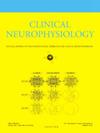脊髓髓内肿瘤切除过程中运动诱发电位的报警标准和可逆性的系统回顾
IF 3.6
3区 医学
Q1 CLINICAL NEUROLOGY
引用次数: 0
摘要
背景/目的:在髓内脊髓肿瘤(IMSCT)切除过程中,肌源性运动诱发电位(myogenic motor-evoked potentials, MEPs)和直接波(Direct waves, d -wave)对于监测运动通路至关重要。然而,警报标准的诊断准确性以及可逆性和不可逆性变化的预后价值仍不清楚。这是解决这一差距的第一项研究。方法根据PRISMA-DTA指南,本综述检索了PubMed, MEDLINE和OVID(1985-2024),以研究IMSCT切除术中术中肌源性mep和/或d波与术后运动结果的关系。结果在25项研究(1060例患者)中,预测术后运动障碍的完全肌源性MEP丢失的log DOR为4.18 (95% CI: 2.63-5.73),预测不完全MEP丢失的log DOR为2.46 (95% CI: 1.74-3.18)。不可逆降低的对数DOR为2.513 (95% CI: 1.197-3.829),可逆降低的对数DOR为0.528 (95% CI: - 0.273-1.330)。d波监测始终使用50%的阈值,可逆降低与75%的损失率相关。不可逆的肌源性MEP和d波变化以及可逆的d波变化增加了术后运动障碍的风险,与可逆的肌源性MEP变化不同。此外,不完全和完全肌源性MEP丢失均可预测神经功能缺损;然而,完全丧失比不完全丧失更有力。这些发现有助于神经生理学家指导外科团队在最大化IMSCT切除的同时最小化运动通路损伤。本文章由计算机程序翻译,如有差异,请以英文原文为准。
Systematic review of alarm criteria and reversibility in motor-evoked potentials during intramedullary spinal cord tumor resection
Background/Objective
Myogenic motor-evoked potentials (myogenic MEPs) and Direct waves (D-waves) are essential for monitoring motor pathways during intramedullary spinal cord tumor (IMSCT) resections. However, the diagnostic accuracy of alarm criteria and the prognostic value of reversible versus irreversible changes remain unclear. This is the first study addressing this gap.
Methods
Following PRISMA-DTA guidelines, this review searched PubMed, MEDLINE, and OVID (1985–2024) for studies on intraoperative myogenic MEPs and/or D-waves with postoperative motor outcomes in IMSCT resections.
Results
Across 25 studies (1,060 patients), log DOR for complete myogenic MEP loss predicting postoperative motor deficits was 4.18 (95% CI: 2.63–5.73), and for incomplete loss was 2.46 (95% CI: 1.74–3.18). Irreversible reductions had a log DOR of 2.513 (95% CI: 1.197–3.829), reversible 0.528 (95% CI: −0.273–1.330). D-wave monitoring used 50% threshold consistently, reversible reductions tied to 75% deficit rate.
Conclusion/significance
Irreversible changes in myogenic MEPs and D-waves and reversible D-wave changes increased postoperative motor deficit risk, unlike reversible myogenic MEP changes. Additionally, both incomplete and complete myogenic MEP loss predict neurological deficits; however, complete loss is a stronger predictor than incomplete loss. These findings help neurophysiologists guide the surgical team in minimizing motor pathway injury while maximizing IMSCT resections.
求助全文
通过发布文献求助,成功后即可免费获取论文全文。
去求助
来源期刊

Clinical Neurophysiology
医学-临床神经学
CiteScore
8.70
自引率
6.40%
发文量
932
审稿时长
59 days
期刊介绍:
As of January 1999, The journal Electroencephalography and Clinical Neurophysiology, and its two sections Electromyography and Motor Control and Evoked Potentials have amalgamated to become this journal - Clinical Neurophysiology.
Clinical Neurophysiology is the official journal of the International Federation of Clinical Neurophysiology, the Brazilian Society of Clinical Neurophysiology, the Czech Society of Clinical Neurophysiology, the Italian Clinical Neurophysiology Society and the International Society of Intraoperative Neurophysiology.The journal is dedicated to fostering research and disseminating information on all aspects of both normal and abnormal functioning of the nervous system. The key aim of the publication is to disseminate scholarly reports on the pathophysiology underlying diseases of the central and peripheral nervous system of human patients. Clinical trials that use neurophysiological measures to document change are encouraged, as are manuscripts reporting data on integrated neuroimaging of central nervous function including, but not limited to, functional MRI, MEG, EEG, PET and other neuroimaging modalities.
 求助内容:
求助内容: 应助结果提醒方式:
应助结果提醒方式:


